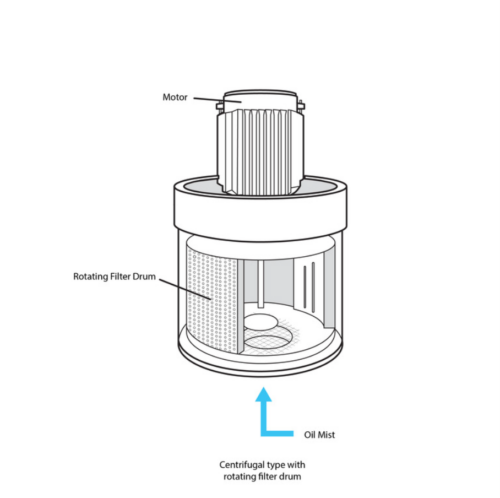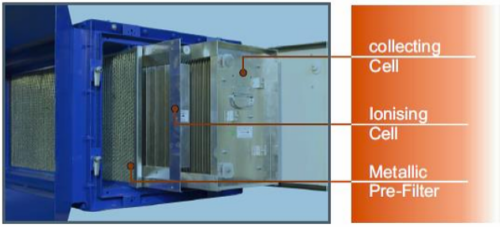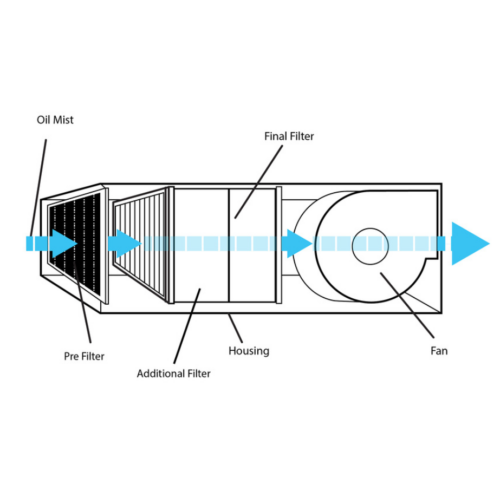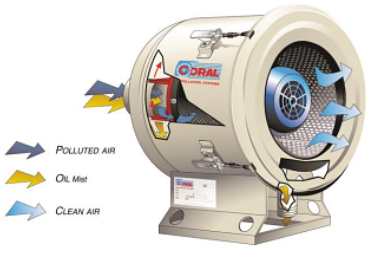Finding the Best Mist Collector for Your Shop
At ITA, Inc., we take pride in our comprehensive range of mist collectors and are confident in our ability to deliver the ideal solution for your shop. Our commitment to satisfaction involves working closely with each individual customer to determine which of our mist collectors will best meet their specific needs. If you have made the critical decision to procure a mist collector for your shop, selecting the right type is essential to achieving your goals.
Factors to Consider When Purchasing a Mist Collector
- source capture vs. ambient system
- single unit, cellular system, or central system
- type of mist collector
- the number of machines that need mist collection and their layout
- whether you need a post filter
- maintenance, budget, warranties, and trial periods
This blog post focuses on the different types of mist collectors on the market. Read on to learn about four types of mist collectors: electrostatic, centrifugal, media type filtration and our hybrid solution.
Comparing Mist Collector Technologies
Choosing the right mist collector for your industrial environment is essential for maintaining air quality and ensuring the efficiency and safety of your operators. The three major technologies used in mist collectors are centrifugal, electrostatic, and media filtration. Each technology has its own set of advantages and disadvantages, making it crucial to understand their differences before making a decision.
Centrifugal Mist Collectors
Centrifugal mist collectors utilize a rotating filter drum, which doubles as a fan. The mist enters the rotating drum and is captured by a filter within it. The mist coalesces into larger droplets and is thrown onto the inner wall of the unit by the centrifugal force generated by the rotating drum, where it continues to a drain.
Pros:
• Source capture system that can be easily mounted on machines.
• Can be moved easily.
• No floor space required.
• Simple maintenance.
Cons:
• The rotating drum captures swarf and grit, leading to imbalance.
• This imbalance causes loud noise and vibration, which can be transferred to the machine tool, affecting the quality of the machined workpiece.
• Requires frequent maintenance due to the inherent out-of-balance problem.

Electrostatic Mist Collectors
Electrostatic mist collectors use a blower to draw mist past an ionizer, which electrically charges the mist particles. These charged particles then pass through collection plates, where they are removed from the airstream.
Pros:
• No replacement filters required.
• Efficient as long as the collection plates are clean.
Cons:
• Efficiency decreases as collection plates become covered with particles like oil and dirt.
• Requires frequent maintenance to clean the collection plates.
• Collection cell needs to be removed and washed regularly to maintain effectiveness.

Media Filtration Mist Collectors
Media filtration mist collectors use a blower to pass contaminated air through a series of filters that capture the mist. The mist eventually coalesces and drips to the bottom of the unit.
Pros:
• Effective at capturing mist.
Cons:
• Filters easily become clogged, requiring frequent replacement.
• Relies entirely on filters, which need regular washing or replacement.

The Noil by Coral: A Hybrid Solution
Our recommendation for a single source capture mist collector is The Noil by Coral. This hybrid unit does not have a rotating filter drum, eliminating the risk of imbalance and vibration. As a result, it operates very quietly. The mist is collected on the blades of the dynamically balanced impeller and slung to the internal body of the unit, where it liquefies and is returned to the machine. Essentially, the impeller collects the mist on the rotating blades, causing the droplets to grow larger and convert from mist to liquid, which then drains down and is recycled. The Noil also features two high-efficiency cartridge filters that are known to last for years before needing washing or replacing, much longer than its competitors.

Conclusion
Selecting the right mist collector for your shop involves understanding the different types available and considering factors such as pricing, maintenance, efficiency, and noise levels. At ITA, Inc., we offer a range of mist collectors tailored to meet the unique needs of our customers. To learn more about the types of mist collectors and other important considerations, we recommend you download our Free Guide to Mist Collectors. Contact us today for a free consultation, and let us help you find the best solution for your shop.